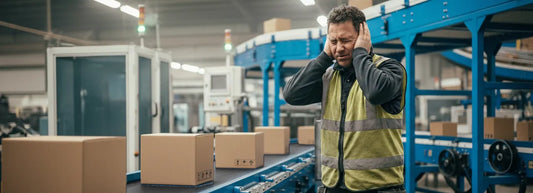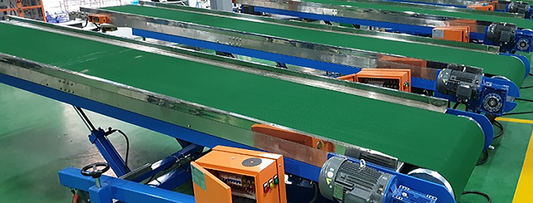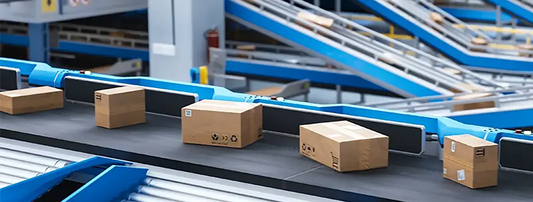An $87,000 Mistake: Why ‘Cheap’ Conveyor Belts Cost More
When a logistics company replaced premium conveyor belts with cheaper alternatives, the result wasn't cost savings — it was a costly conveyor belt failure that led to $87,000 in downtime and damaged goods. Learn why investing in quality conveyor belts matters, and how to avoid expensive mistakes in logistics operations.

It started with good intentions. A customer in the logistics sector — a distribution center handling over 12,000 parcels per day — decided to cut costs by switching their tried-and-true KCB conveyor belts for a cheaper alternative. The belts looked similar, promised “comparable specs,” and came at a price nearly 8% lower.
3 months later, their main sorting line ground to a halt. One of the belts had split under load, just as the morning shift was ramping up. The resulting downtime, repairs, and penalties racked up an invoice that no one expected:
$87,000 in operational losses.
What Really Happened?
- The replacement belts wore out prematurely.
- Delamination and slippage caused misalignment and product jams.
- The belts lacked proper static control — a nightmare for barcode scanning.
- Ultimately, the mainline belt failed, halting parcel distribution for nearly 11 hours.
“We saved on the belt — and paid for it tenfold in damage control.”
— Operations Director
The Hidden Cost of “Budget Belts”
Many buyers understandably look at the price tag first. After all, a belt is just a belt — or so it seems. But here's the truth: the real cost of a conveyor belt is not what you pay to buy it — it's what you pay when it fails.
Here's what we often see in low-quality belts:
- Shorter lifespan due to weak tensile structure
- Poor bonding between layers, leading to delamination
- Inconsistent thickness causing tracking issues
- Lack of anti-static properties in E-commerce environments
- Inferior surface friction, affecting grip and alignment
While initial pricing is easy to compare, what you can’t see in a quote will finally explode in the long-term performance:
- Frequent belt replacements
- Emergency downtime
- Maintenance labor
- Delayed shipments and customer complaints
- Potential brand damage
In short, a cheap belt isn't a deal — it's a gamble.

Why KCB Belts Make Differences
At Kunming Conveyor Belt Co., Ltd., we don't chase the lowest price. We engineer belts that lower your total cost of ownership by delivering:
- Stable Performance: Designed to track straight, maintain grip, run smoothly and quietly.
- Longer Service Life: with reduced wear and tear.
- Compliance to Industrial Standards and Certifications.
- Tailored Solutions: that meet the very specific working requirements and environment.
Lessons Learned
The customer eventually returned to KCB — not just for belts, but for peace of mind.
“We thought we were saving money. But in hindsight, that decision cost us more than we could've imagined.
KCB's belts simply work — and that's what matters.”
— Operations Director
Think Long-Term, Not Short-Term
If you’re sourcing belts today, ask yourself:
- How much downtime can I afford?
- What's the cost of one hour of lost production?
- Am I buying price — or performance?
- Sometimes, the best investment isn't the one with the lowest sticker — it's the one that protects your uptime, productivity, and reputation.
Final Thought
The $87,000 mistake wasn't just about a failed belt — it was about choosing cost over quality.
Don't let your next belt become your next regret.
Talk to us today about how KCB can help your operation run better — and smarter.







